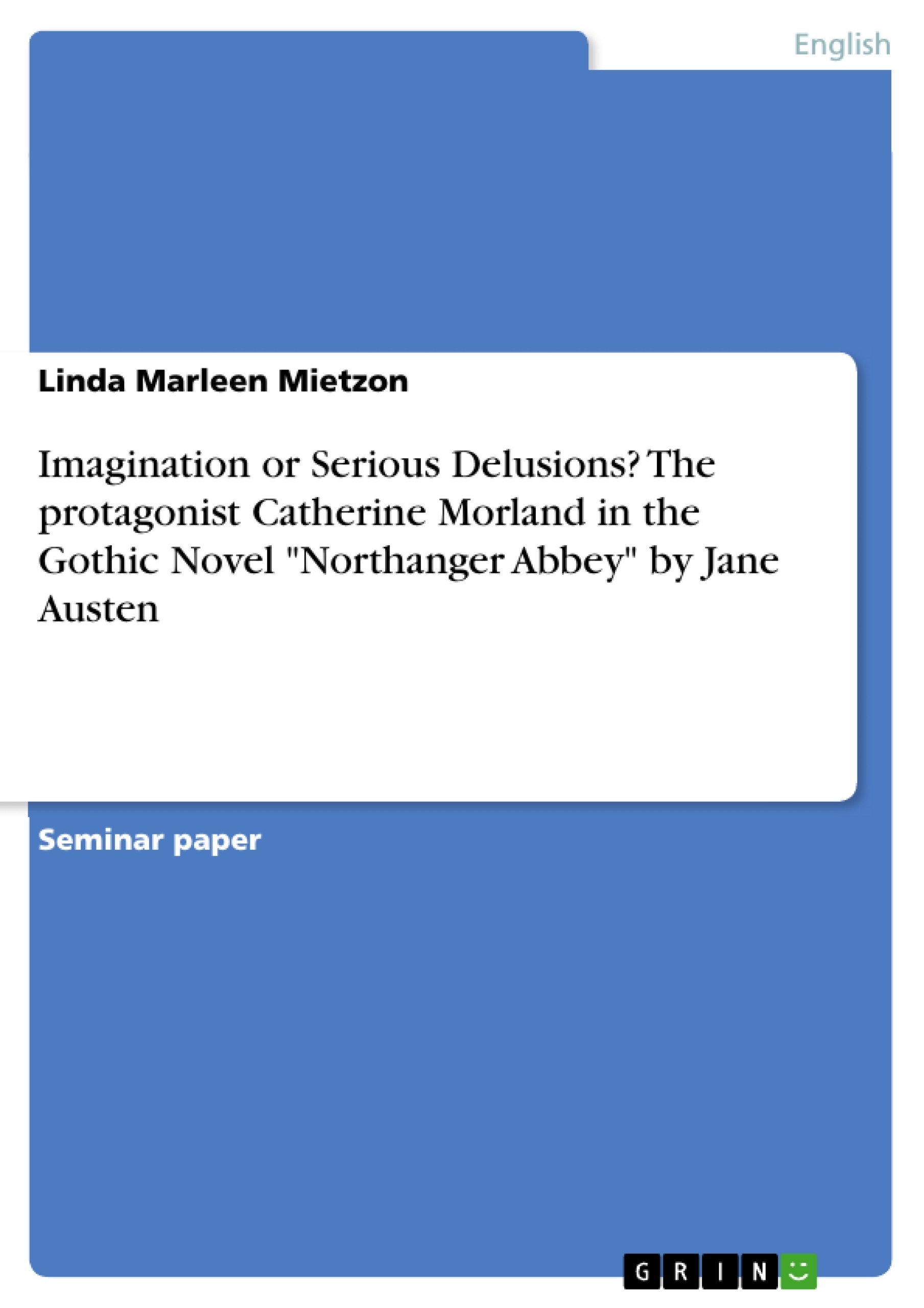This paper is concerned with Jane Austen's novel "Northanger Abbey", which was published posthumously in 1817 and can be classified as a Gothic parody.
It will analyze the relation between the novel's protagonist Catherine Morland and Gothic novels; it seeks to determine the significance the Gothic novels have for Catherine. The paper aims to demonstrate that Catherine becomes delusional after reading Gothic novels, she is unable to differentiate between fiction and reality. Her delusions only get interrupted through comic reliefs.
Inhaltsverzeichnis (Table of Contents)
- Introduction
- The Gothic Novel
- General Information
- Characteristic Elements
- The Mysteries of Udolpho in Northanger Abbey
Zielsetzung und Themenschwerpunkte (Objectives and Key Themes)
This paper aims to analyze the relationship between Jane Austen's Northanger Abbey and the Gothic novel genre. The paper will examine the influence of Gothic literature on Catherine Morland, the protagonist, and explore how it affects her perception of reality. The paper aims to demonstrate that Catherine's immersion in Gothic novels leads to delusional thinking, blurring the lines between fiction and reality.
- The impact of Gothic literature on Catherine Morland's character development
- The distinction between imagination and delusion in the context of Gothic novels
- The portrayal of female characters and their experiences within the Gothic genre
- The interplay between Gothic conventions and comedic elements in Northanger Abbey
- The role of Female Quixotism in understanding Catherine Morland's behavior
Zusammenfassung der Kapitel (Chapter Summaries)
- Introduction: This chapter introduces the paper's focus on Jane Austen's Northanger Abbey as a Gothic parody and highlights the significance of Catherine Morland's fascination with Gothic novels. It also outlines the paper's aim to demonstrate the delusional nature of Catherine's thinking due to her immersion in this genre.
- The Gothic Novel:
- General Information: This section provides a brief overview of the Gothic genre, particularly focusing on its British origins and evolution, emphasizing its popularity during the late 18th and early 19th centuries, coinciding with the time frame of Austen's novel.
- Characteristic Elements: This section delves into the distinctive features of the Gothic novel, including its settings, atmosphere, character traits, and stylistic choices. It explores elements such as dark and mysterious locations, supernatural events, strong emotions, and the presence of powerful, tyrannical male figures.
Schlüsselwörter (Keywords)
The key terms and concepts central to this paper include Gothic literature, Gothic novels, Jane Austen, Northanger Abbey, Catherine Morland, Female Quixotism, delusion, imagination, fiction, reality, Gothic conventions, and comedic elements.
- Quote paper
- Linda Marleen Mietzon (Author), 2020, Imagination or Serious Delusions? The protagonist Catherine Morland in the Gothic Novel "Northanger Abbey" by Jane Austen, Munich, GRIN Verlag, https://www.grin.com/document/1249561




